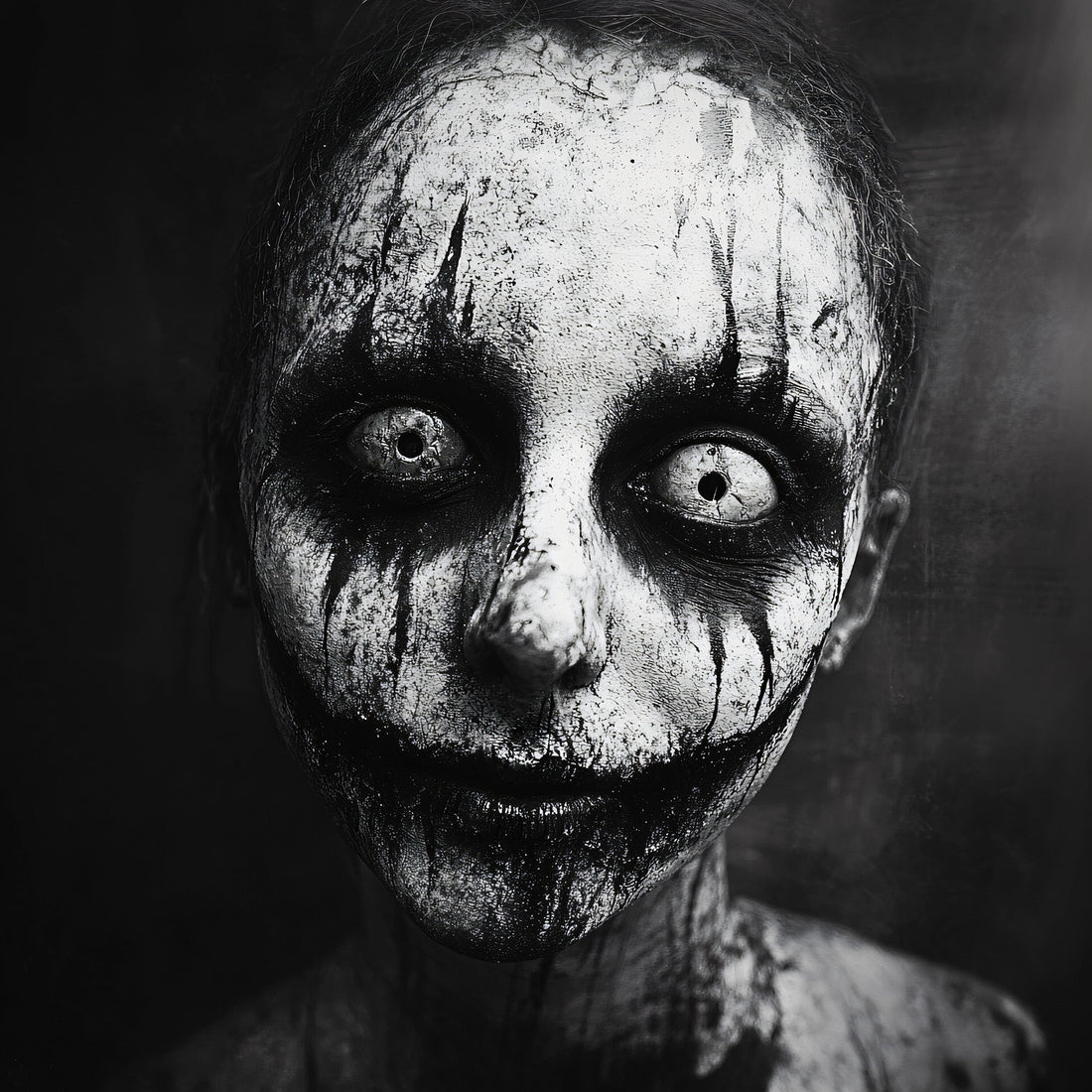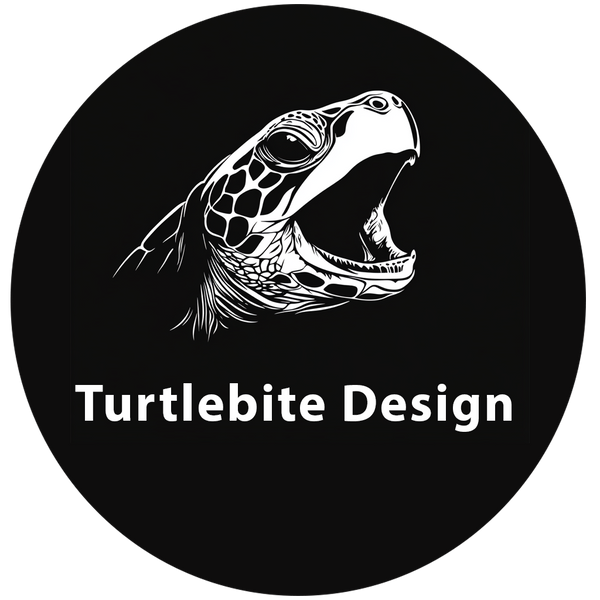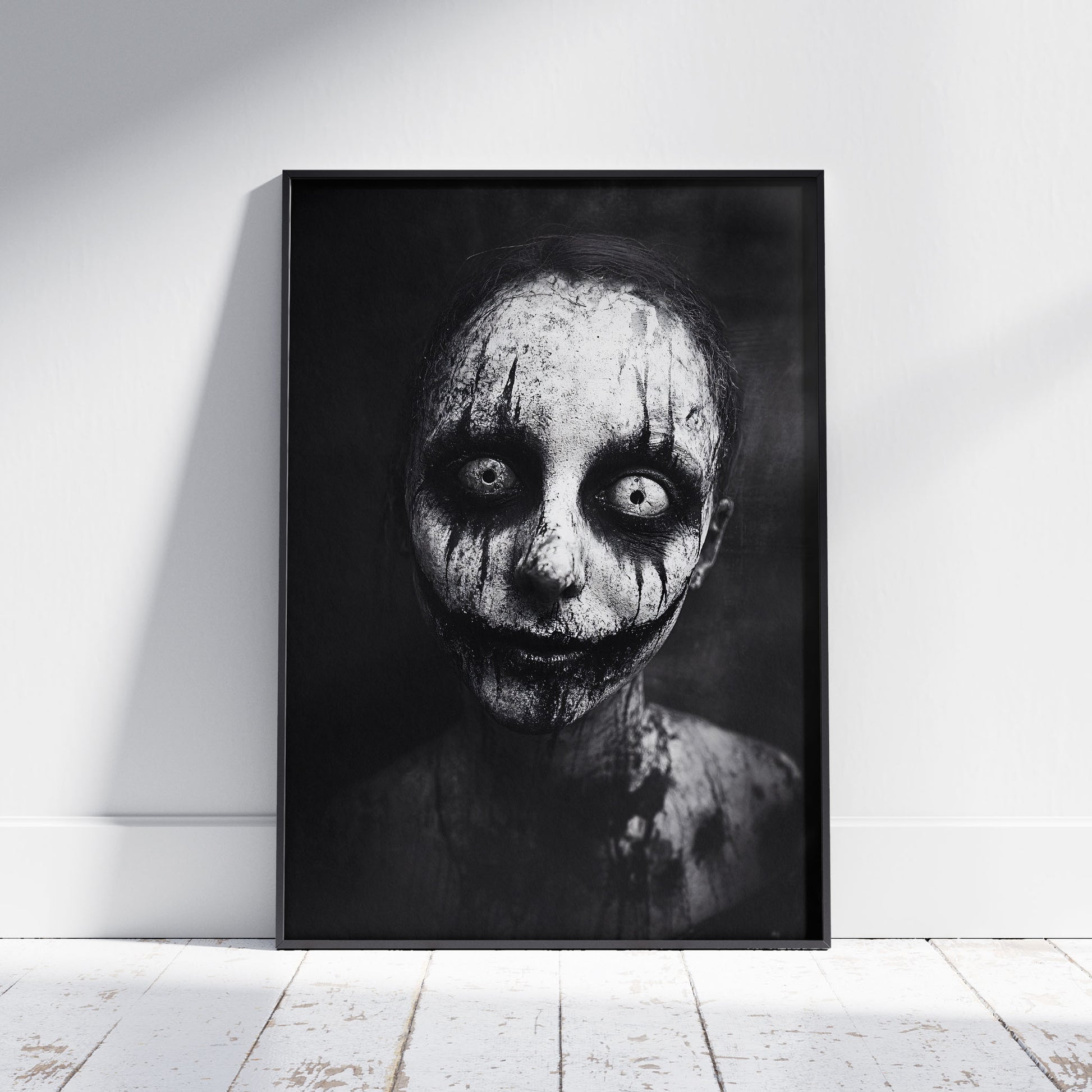
When Your Wall Art Gives You Trust Issues: The Unnerving Appeal of Creepy Portrait Art
ChristianShare
You know that feeling when you walk into someone's living room and their creepy portrait art seems to follow you around the room? Yeah, that's exactly what we're talking about here. There's something deliciously unsettling about having a pair of haunting eyes watch your every move from the comfort of your own wall.
Let me tell you something – I've been collecting dark horror face prints for years, and nothing quite hits the same nerve as a well-executed disturbing portrait. This particular style of gothic horror poster art has this incredible ability to transform any space from "cozy home" to "abandoned Victorian mansion" faster than you can say "psychological thriller."
Why Creepy Portraits Pack Such a Visual Punch
Ever wonder why certain pieces of scary wall decor make your skin crawl while others just look like Halloween store rejects? It's all about the eyes, my friend. The most effective macabre face art understands that the windows to the soul can also be the gateway to your nightmares :)
The anatomy of unsettling artwork includes:
- Asymmetrical facial features that create visual tension
- High contrast black and white schemes that amplify shadows
- Weathered or damaged skin textures suggesting decay
- Direct eye contact that creates psychological discomfort
- Ambiguous expressions that leave room for interpretation
This style of horror character design taps into something primal in our brains. We're hardwired to read faces for emotional cues, so when an artist deliberately breaks those rules, our minds start doing mental gymnastics trying to process what we're seeing.
The Art of Making Guests Uncomfortable (In the Best Way)
Let's be real here – you don't hang creepy wall art because you want people to feel relaxed in your space. You hang it because you appreciate the darker side of human creativity, and maybe because you enjoy watching your mother-in-law squirm a little during Sunday dinner.
Dark art prints like disturbing portraits serve multiple purposes in home decor:
Conversation Starters That Actually Start Conversations
Unlike that generic motivational poster that says "Hang in There" (seriously, who thought that was inspiring?), a well-chosen piece of gothic home decor gets people talking. Whether they love it or hate it, they're definitely not ignoring it.
Creating Atmospheric Depth
Horror enthusiast decor adds layers of personality to your space that you simply can't achieve with mass-produced art. When someone walks into a room featuring carefully curated spooky bedroom art, they immediately understand that this isn't your average Netflix-and-chill environment.
Challenging Aesthetic Norms
There's something rebellious about choosing dark academia wall art over the expected landscape paintings or abstract florals. It's a subtle way of saying, "I appreciate beauty in unconventional forms, and I'm not afraid to make bold choices."
The Technical Side of Terror: What Makes Horror Art Work
Creating effective macabre wall decor isn't just about slapping some scary makeup on a face and calling it art. The best pieces in any horror art collection demonstrate sophisticated understanding of composition, lighting, and psychological impact.
Key elements that separate amateur scary art from professional nightmare fuel:
Mastery of Light and Shadow
The most compelling creepy face prints use dramatic chiaroscuro techniques – think Caravaggio, but with significantly more psychological damage. Strategic lighting creates depth and mystery while emphasizing the most unsettling features.
Textural Storytelling
Look at how weathering, cracks, and decay tell a story without words. The best disturbing portrait art suggests a history – what happened to this face? How did it get this way? Your imagination fills in the terrifying blanks.
Color Psychology (Or Lack Thereof)
Black and white horror art eliminates the distraction of color, forcing viewers to focus on form, texture, and expression. It's a classic technique that never loses its impact because it strips away everything except the raw emotional content.
Building Your Collection Without Breaking Your Budget (Or Your Sanity)
Starting a collection of gothic aesthetic wall art doesn't require selling your soul to the devil – though I'm sure he'd appreciate the irony. Smart collectors know that building an impressive gallery of horror movie poster style art is about curation, not just accumulation.
My personal approach to collecting creepy portraits:
Start With One Statement Piece
Choose something that genuinely unsettles you in the best possible way. This becomes your anchor piece – everything else should complement its mood and intensity. Don't go overboard on your first purchase; let your collection evolve naturally.
Mix Styles and Eras
The most interesting collections blend different approaches to horror art. Pair modern digital nightmare fuel with vintage gothic prints, or contrast highly detailed portraits with more abstract disturbing imagery.
Consider Your Space's Natural Lighting
FYI, the same piece can look completely different depending on your room's lighting situation. Natural daylight reveals different details than artificial lighting, and trust me, you want to know how your art looks in both scenarios before committing wall space.
The Psychology Behind Our Love of Being Scared
Why do we voluntarily surround ourselves with images designed to make us uncomfortable? The answer probably says something interesting about human nature that I'm not qualified to psychoanalyze, but I can tell you what I've observed in my years of collecting this stuff.
Creepy portrait art serves as a form of controlled fear experience. We get the thrill of encountering something genuinely unsettling without any actual danger. It's like riding a roller coaster, but for your living room.
There's also something deeply satisfying about owning art that challenges conventional beauty standards. In a world obsessed with perfection and Instagram filters, choosing to display macabre face art feels like a small act of rebellion against sanitized aesthetics.
Technical Considerations for Displaying Horror Art
Hanging scary wall decor effectively requires more thought than your average artwork. These pieces demand specific presentation to achieve maximum impact without overwhelming your space.
Essential display tips for maximum creep factor:
Height and Eye Level Placement
Position disturbing portraits at eye level for direct psychological impact. Too high, and they lose their confrontational power. Too low, and they just look awkward instead of menacing.
Surrounding Space Management
Give your horror pieces room to breathe. Crowding them with other art dilutes their individual impact. These aren't pieces that play well with others – they demand attention and respect.
Lighting Strategy
Invest in adjustable lighting options. Your creepy face prints will look completely different under soft ambient lighting versus harsh directional spots. Experiment until you find the sweet spot that enhances rather than flattens the image's impact.
Where Horror Art Fits in Modern Interior Design
Gone are the days when appreciating gothic horror poster art meant living in a stereotypical "goth cave." Modern interior design has embraced the sophisticated use of dark elements as accent pieces that add depth and personality to otherwise conventional spaces.
Contemporary applications of horror-themed art:
Minimalist Spaces With Dark Accents
One powerful piece of disturbing portrait art can transform an entire minimalist room from sterile to intriguing. The contrast between clean lines and chaotic imagery creates visual tension that's far more interesting than another geometric print.
Industrial and Loft Environments
Dark art prints feel naturally at home in industrial spaces. The raw textures and urban aesthetics complement each other perfectly, creating environments that feel authentic rather than forced.
Academic and Library Settings
There's something delightfully contradictory about pairing scholarly environments with macabre wall decor. It suggests intellectual curiosity that extends beyond safe, conventional topics – always a conversation starter in academic circles.
The Future of Creepy Wall Art
As digital art techniques continue evolving, we're seeing increasingly sophisticated approaches to creating unsettling imagery. Modern artists have tools at their disposal that previous generations could only dream of, resulting in horror character design that pushes boundaries in exciting new directions.
The rise of print-on-demand services has also democratized access to unique horror art. You no longer need to hunt through obscure galleries or commission expensive original pieces to build an impressive collection of creepy wall art.
But here's the thing – technology can't replace the fundamental understanding of what makes an image truly unsettling. The best contemporary horror artists still rely on classical techniques of composition, lighting, and psychological manipulation that have been scaring people for centuries.
Whether you're just starting to explore the world of gothic home decor or you're a seasoned collector of nightmare fuel, remember that the best horror art serves a purpose beyond simple shock value. It challenges our perceptions, provokes emotional responses, and adds layers of complexity to our living spaces that conventional art simply can't match.
So go ahead, embrace your dark side. Your walls (and your guests) will thank you for it. Or maybe they won't thank you, but they definitely won't forget you :/ And honestly, isn't that what good art is supposed to do?


























